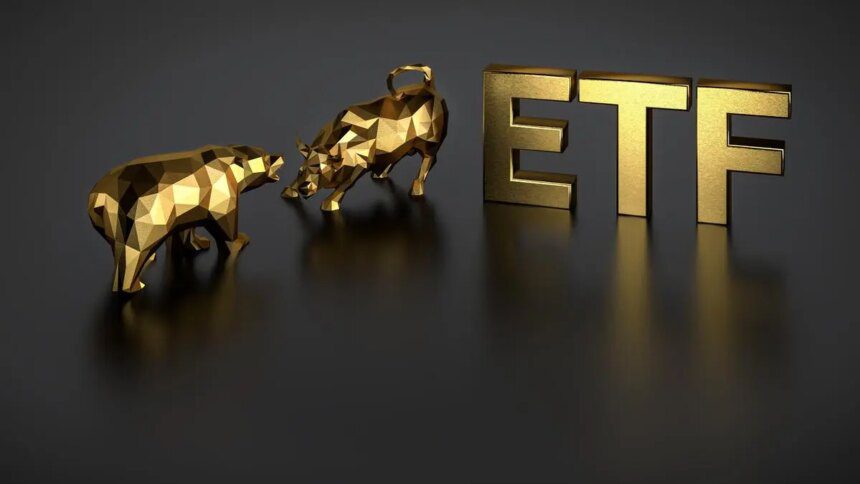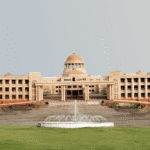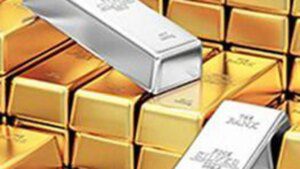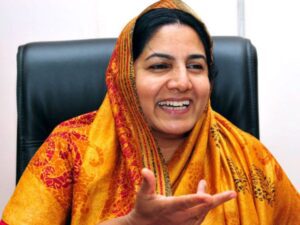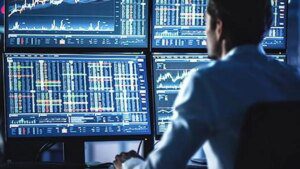As Dhanteras approaches, Indian investors are increasingly turning to gold, not only due to tradition but also as a safeguard against economic uncertainties. Amid current market challenges, exchange-traded funds (ETFs) have emerged as an appealing option for many investors.
Rising physical prices of gold and concerns regarding storage are prompting a shift towards paper forms of bullion. Notably, gold ETFs recorded significant inflows of ₹8,151 crore in September, with silver ETF folios tripling during the same period.
“Given concerns over purity and storage, investors are leaning towards ETFs and mutual funds for exposure to bullion,” stated Nitin Rao, CEO of InCred Wealth. Funds such as Kotak Gold Silver Passive FoF, Mirae Asset Gold Silver Passive FoF, Edelweiss Gold and Silver ETF FoF, and Motilal Oswal Gold and Silver ETFs FoF have gained traction among those seeking diversified investments without the need to physically handle the assets.
However, several fund houses, including Kotak, Tata, UTI, and SBI, have suspended lump sum investments due to a persistent shortage of physical silver in the domestic market, coupled with a significant premium on local prices compared to global rates.
Tejas Shigrekar from Angel One noted that reduced customs duties and a streamlined capital gains tax regime have spurred interest in ETFs and digital gold investments. Jateen Trivedi, Vice-President of Research at LKP Securities, also advocates for ETFs, Sovereign Gold Bonds (SGBs), and digital gold over physical purchases, citing their liquidity and safety benefits.
While precious metals have performed well this year, wealth managers caution that their allure may obscure potential risks of overvaluation. The overarching advice is to remain disciplined, diversify investments, and steer clear of emotionally driven purchases.
Gold and Silver Surpass Equities
In 2025, both gold and silver have outstripped equity market performance, driven by trends such as de-dollarization, geopolitical tensions, and inflation concerns. Hareesh V, Head of Commodity Research at Geojit Investments, reported that silver emerged as a standout performer, soaring from ₹95,180 per kg last October to ₹1,64,000 by mid-October 2025 — representing a remarkable 72% increase. Gold also saw a substantial rise of 59%, moving from ₹77,159 per 10 grams to ₹1,23,370 during the same timeframe. In contrast, the Nifty 50 index recorded just a 1.7% gain, increasing from 24,854 to 25,200.
Trivedi corroborates this trend, observing that silver’s dual role as both a precious metal and an industrial commodity has attracted investors seeking both safety and growth opportunities.
On a five-year basis, from Diwali to Diwali, gold and silver have compounded at rates of 19.9% and 21% CAGR, respectively, compared to the Nifty’s 14.6%. Long-term data from Trivedi indicates an even more significant outperformance, with gold and silver rising by 153% and 165%, respectively, since 2020, in contrast to the Nifty’s 119% increase.
Silver: The Volatile Star
The surge in silver prices this year appears largely linked to industrial demand. “The rally is supported by a structural supply deficit and record industrial consumption of 680.5 million ounces anticipated in 2024,” said InCred’s Rao. Hareesh further noted that silver’s crucial role in solar panels, electric vehicles, and semiconductor production has made it a primary beneficiary of the transition to green energy. Trivedi estimates that approximately 70% of silver’s price rise is driven by investment, while 30% stems from industrial use — a combination that enhances its long-term attractiveness.
However, analysts caution about silver’s high volatility, with annual price fluctuations exceeding 20%, compared to gold’s 14% and the Nifty’s 12%. They advise that while silver holds tactical appeal, investors need patience and a greater risk tolerance.
Global Drivers and Diwali Outlook
Gold maintains its status as a robust asset amid numerous global dynamics. “Escalating geopolitical tensions, trade disputes—particularly with China—and uncertainty surrounding US Federal Reserve policies are heightening safe-haven demand,” noted Hareesh. Furthermore, continued strong demand from central banks reinforces gold’s status as a reserve asset.
Both Hareesh and Trivedi anticipate that the bullish trend in precious metals will continue through mid-2026 due to dovish global monetary policies, dollar weakness, and ongoing central bank purchases. For Diwali, their price targets estimate gold at ₹1,22,000-1,27,000 per 10 grams and silver ranging from ₹1,50,000 to ₹1,70,000 per kg, contingent upon current geopolitical and macroeconomic conditions.
Nevertheless, they warn that a significant rebound in the US dollar or a reduction in geopolitical risks could temper any short-term price rallies.
Balancing Glitter with Growth
Despite the cultural allure of gold purchases during Diwali, wealth managers emphasize a measured investment strategy. “If your commodity allocation is already at 10-15%, it would be prudent to pause additional purchases,” advised Sandipan Roy of Motilal Oswal Private Wealth, cautioning against impulse buying.
For investors with a 5-7 year horizon, experts suggest a balanced portfolio comprising around 60-70% in equities, 15-20% in gold, and 10-15% in silver. Shigrekar recommends staggered ETF or SIP investments to average out high prices and manage volatility more effectively.
Hareesh further advises against making lump sum investments. “Purchasing at inflated levels heightens downside risk if global conditions change. Investors should consider phased purchases or hedging through ETFs and futures.”
The question of how much gold to acquire returns this festival season laden with complexity. While the 2025 market rally presents opportunities, experts maintain that gold and silver are best utilized as measured constituents of a well-rounded investment portfolio.


